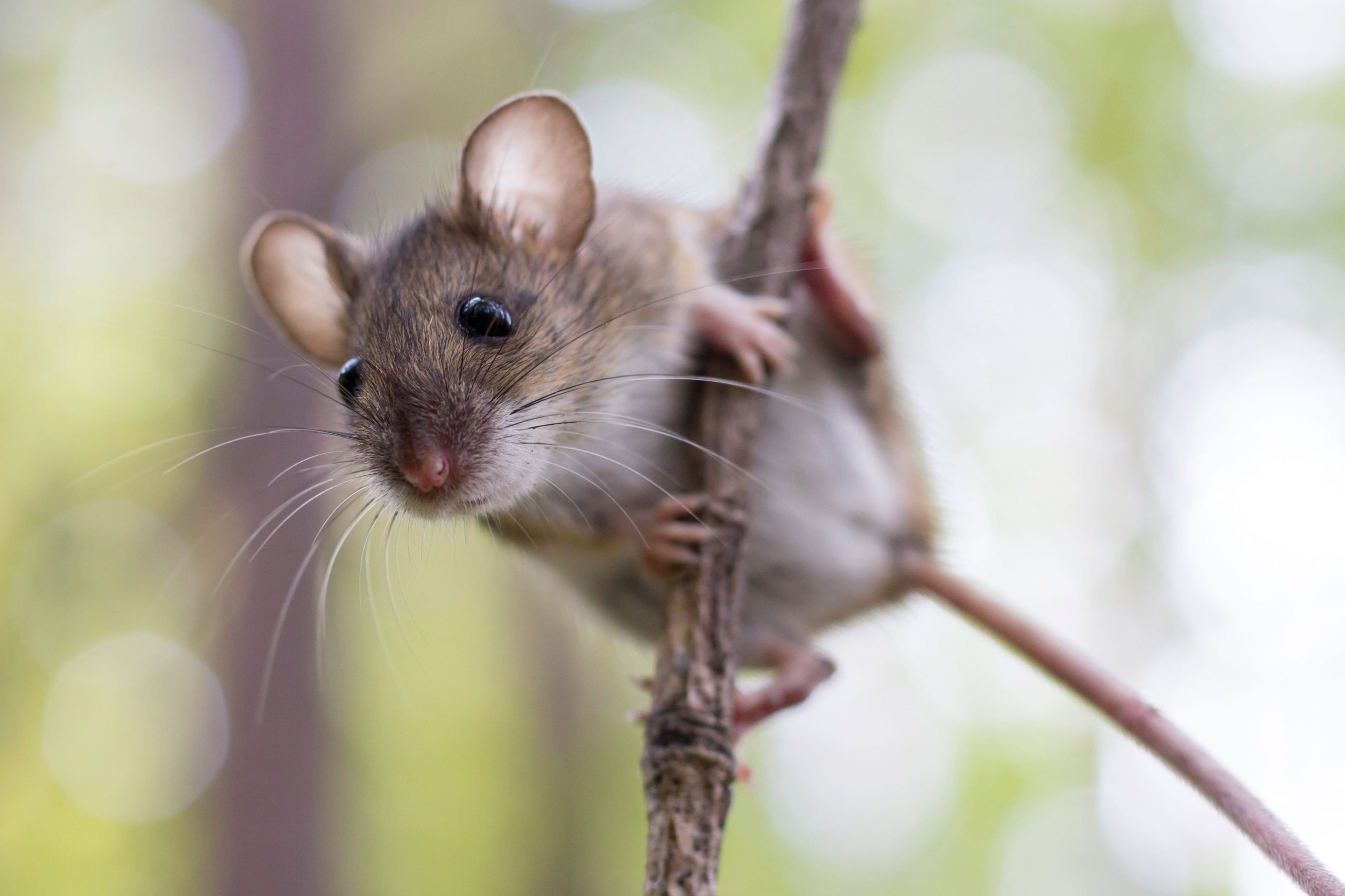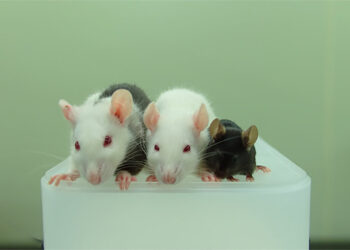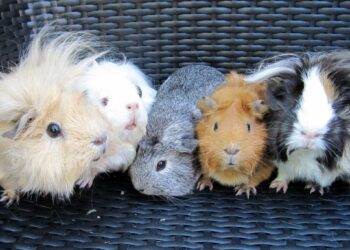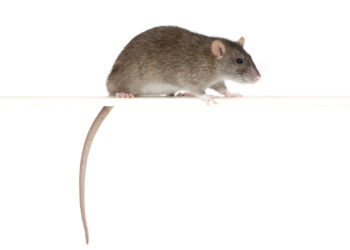The European dwarf mouse (harvest mouse) is small. Very small. Almost as small as a large beetle. The harvest mouse lives on the high grass verge, in overgrown gardens, and in wheat fields. It is most active at night in the summer and feeds on seeds, but also preys on moths and grasshoppers. The pygmy mouse does not yet belong on the list of endangered species, although the number is steadily decreasing. But that could well change in the future. Due to modern farming methods, pesticides, and zoning plans, its habitat is shrinking.
Grabbing Tail
The European pygmy mouse ( Micromys minutes ) is the smallest rodent in Europe next to the birch mouse. It grows to about 7 cm in length. Just as long as his tail. And it weighs between 6 and 12 grams. Length and weight are partly determined by the quality of its biotope (approx. 400 m²). The fur of the pygmy mouse has two colors: the top is usually yellow-brown to orange-brown, and the belly is pale white. The more humid the habitat, the darker the color these mice become. Its snout is blunt and the hairy ears are reminiscent of a vole.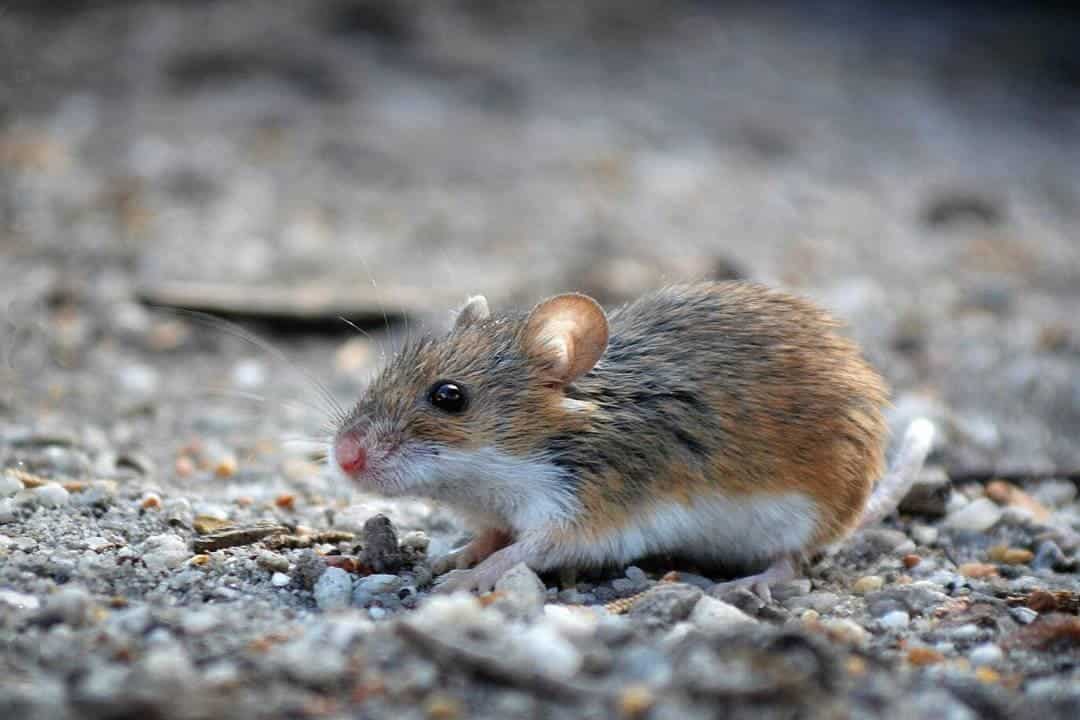
Scrambling
The most striking thing about the pygmy mouse is its prehensile tail . In this way he finds a foothold on the stalks, he can ‘slow down and keep his balance. He uses all four legs to climb and look for food. Thus he climbs up to the ears of the wheat stalks.
Habitat Of The Dwarf Mouse: Meadows, Roadsides, And Overgrown Gardens
The pygmy mouse is most active at night in the summer. And during the winter, during the day. It prefers to stay in areas with a lot of reeds and other high vegetation. It is therefore mainly found in meadows, roadsides, overgrown gardens, and mature hedges.
From Europe to Asia
The pygmy mouse occurs to a greater or lesser extent throughout Europe, Russia (Siberia), and the northern part of Asia, but also in the more southern Tibet and parts of southern China.
Seeds, Fruits, And Harmful Insects
The dwarf mouse is an omnivore. It eats seeds, and fruits but also insects such as moths and grasshoppers, depending on what can be found in its biotope during the different seasons. However, seeds and grains make up the bulk of its menu. No doubt the dwarf mouse does some damage in the wheat fields. However, it also hunts for harmful insects, including honeydew.
Reading Suggestions: How to Take Care of a Hamster
Reproduction
The mating season starts in April and May. After a gestation period of about 20 days, the female pygmy mouse produces six litters of 4 to 8 young each year until September. The offspring are sucked and brushed. After a day or two, the initially blind young can crawl around the nest.
Pet
Eight to nine days later, the young have teeth, a coat, and eat solid food. This is necessary because the milk production of the female mouse then decreases sharply and eventually stops. During this period, the female collects seeds and other treats. After 12 to 16 days, the young are ready to leave the nest. A dwarf mouse lives for about 6 months to a year and a half. As a ‘ pet ‘ he can live up to 4 to 5 years.
The Nest Of The European Pygmy Mouse (Harvest Mouse)
The pygmy mouse is the only European mouse species that makes the nest above ground. About 30-120 cm above the ground between the culms and plant stems. The female braids the nest with narrow strips of grass, which are attached to a sturdy blade. The braid holes are then filled with plant material. The spherical shelter for the pregnant pygmy mouse, which does not want a male around it during this period and after the litter, is about 10 centimeters in diameter. She closes the entrance with grass.
Important Characteristics Of The European Pygmy Mouse (Harvest Mouse)
The European pygmy mouse belongs to the order Rodentia (rodents), the family Muridae (mouse-like), and the genus Micromys.
Dimensions
- Length (head and body): approx. 7 cm; prehensile tail: approx. 7 cm.
- Weight: 5-10 grams.
Habitat
- Almost all of Europe as far as Northeast Siberia
- In Asia to Korea and Japan.
Lifestyle
- Food: seeds, fruits, and insects.
- Behavior: a nocturnal animal in summer, more active during the day in winter.
Reproduction:
- Mating season: April to September.
- Wearing time: 20 days; approx. 5 young per litter; up to 6 litters per year.
Relationship
- The dwarf mouse belongs to the house mouse and the wood mouse family.
- Probably also related to Southeast Asian genera, including the Haeromys.

Endangered Species
Dwarf mice live in the tall grass and in wheat fields. They also like to linger among the reeds on the dry banks of streams and rivers. However, there are plenty of signals that indicate that the pygmy mouse will become an endangered species in the foreseeable future. The stock is reduced by one-eighth every year. This is mainly due to modern farming methods. Not to mention the use of pesticides and the use of combines. Zoning plans for housing are also the reason that the pygmy mouse has disappeared in many places.




